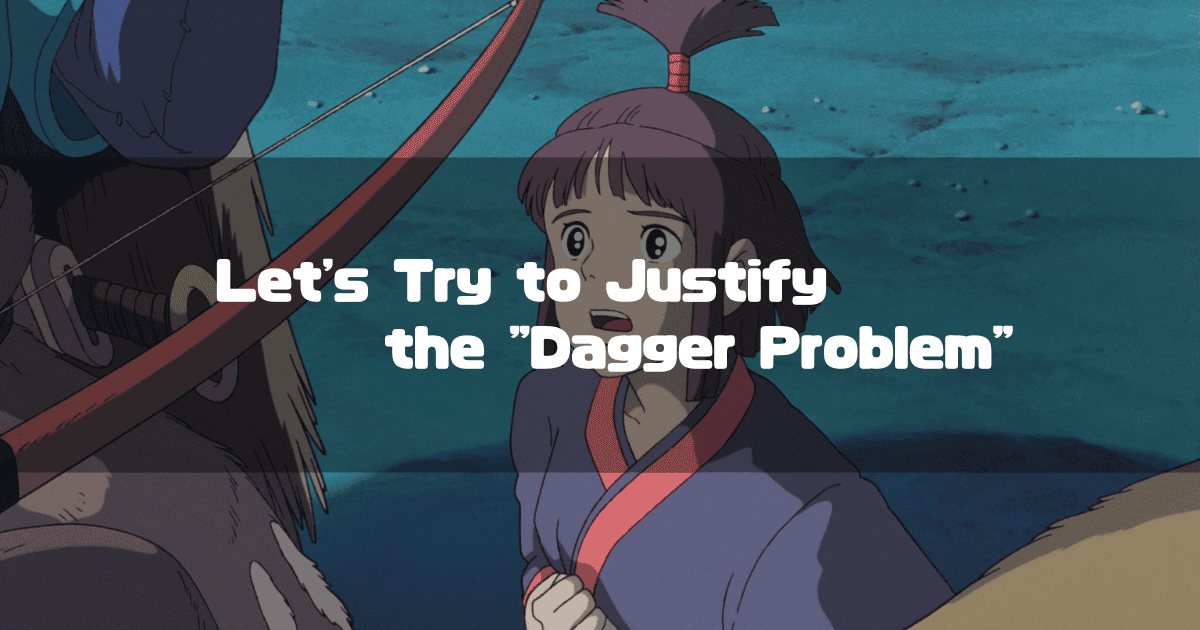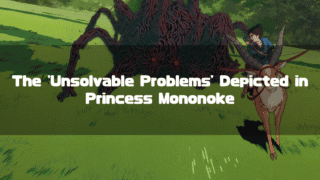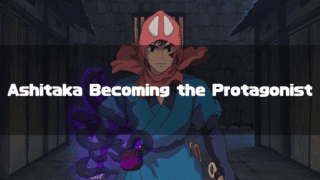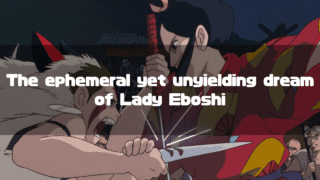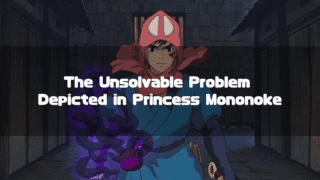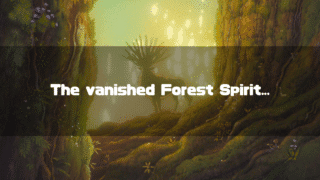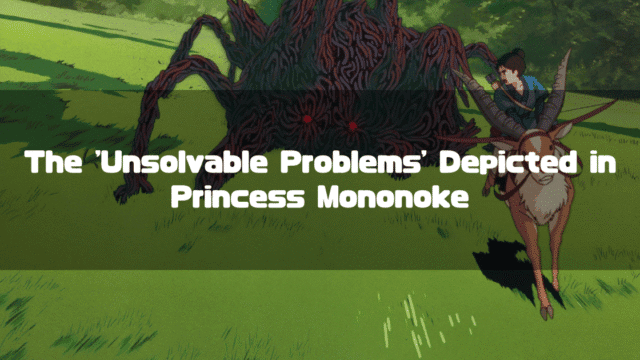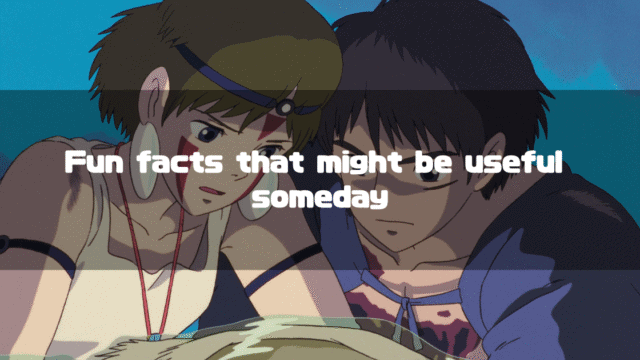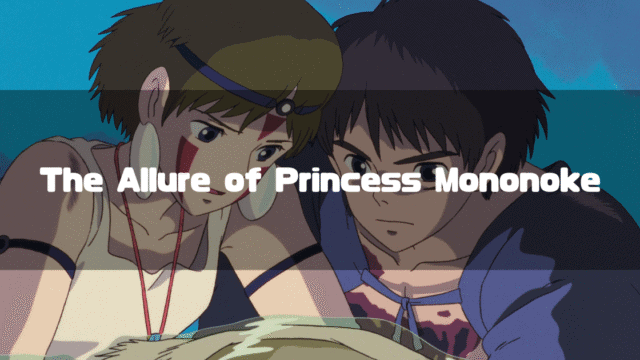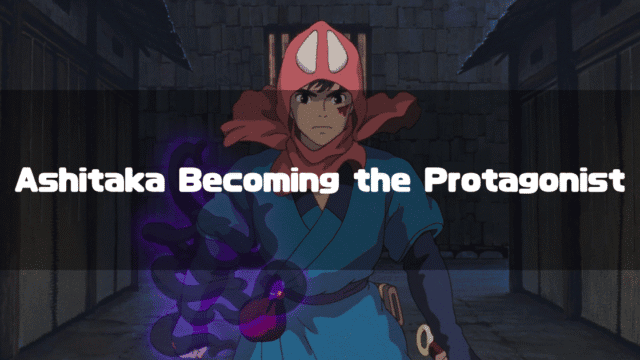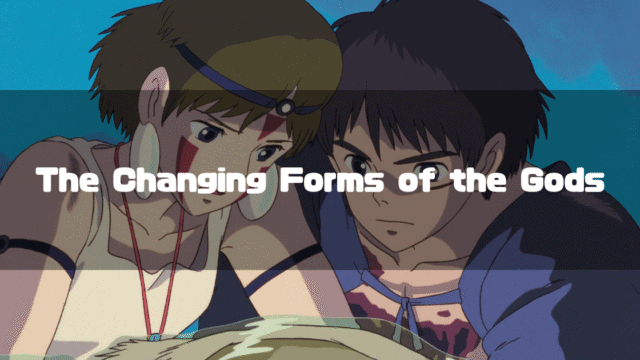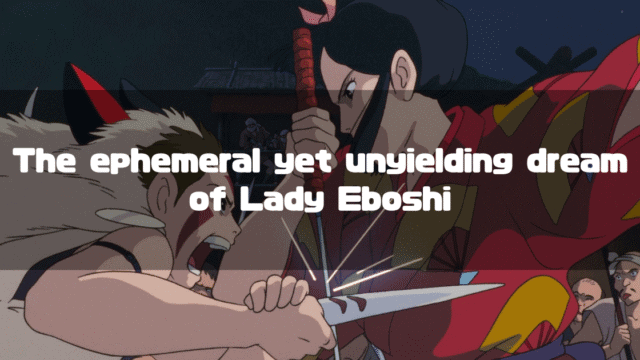When I first saw Princess Mononoke(Studio Ghibli Official), I was in the 6th grade. I remember seeing the scene where Ashitaka entrusts the crystal dagger (to be precise, an obsidian dagger) he received from Kaya to the wolf gods and thinking, even as a child, “Wait, you’re giving that away?” That was my very first impression.
However, as time passed, I began to think about it more, and I started to wonder if I could see that scene in a positive light. This time, I’d like to try and rationalize “The Problem of Giving Kaya’s Dagger to San” and turn it into a “good scene.”
But before that, let’s delve into the slightly amusing inner world of Ashitaka, who is in the midst of hardship, and take a “normal” look back at the scene where he gives Kaya’s dagger to San.
*This article is an English translation of the original Japanese article, 「もののけ姫」でアシタカは何故カヤの小刀をサンに渡してしまったのか?.
Let an AI walk you through the highlights of this post in a simple, conversational style.
- Ashitaka is a man with a “kingly” nature.
His actions, such as taking the women’s jokes seriously and entering their workplace in Irontown, or naturally telling San “You’re beautiful,” show his “kingly” personality, unburdened by any complexes towards women. - Giving away the dagger can be seen as a natural act in a way.
For the “kingly” Ashitaka, giving a gift from one woman to another is not a problematic act. To see it as a problem is to misunderstand the very nature of Ashitaka. - Ashitaka crying while holding Kaya’s dagger.
Exiled from his home on a journey with an unclear purpose, Ashitaka may have cried many times while clutching Kaya’s dagger. The harshness of his journey likely shaped his spirit. - Ashitaka’s tears as a turning point in his purpose for living.
Ashitaka’s tears upon realizing his curse was not healed are a sign of despair, but they are also depicted as a turning point where he chooses to “live not for himself, but for San.” - Giving the dagger to San is an expression of his wish for her well-being.
For Ashitaka, the dagger has become more than just a “gift from Kaya”; it is a symbol of overcoming hardship. Giving it to San is an expression of his wish for her to “overcome this hardship.” This might be similar to the feelings Kaya had when she gave the dagger to Ashitaka.
Ashitaka’s Personality and the Scene of Giving Kaya’s Dagger
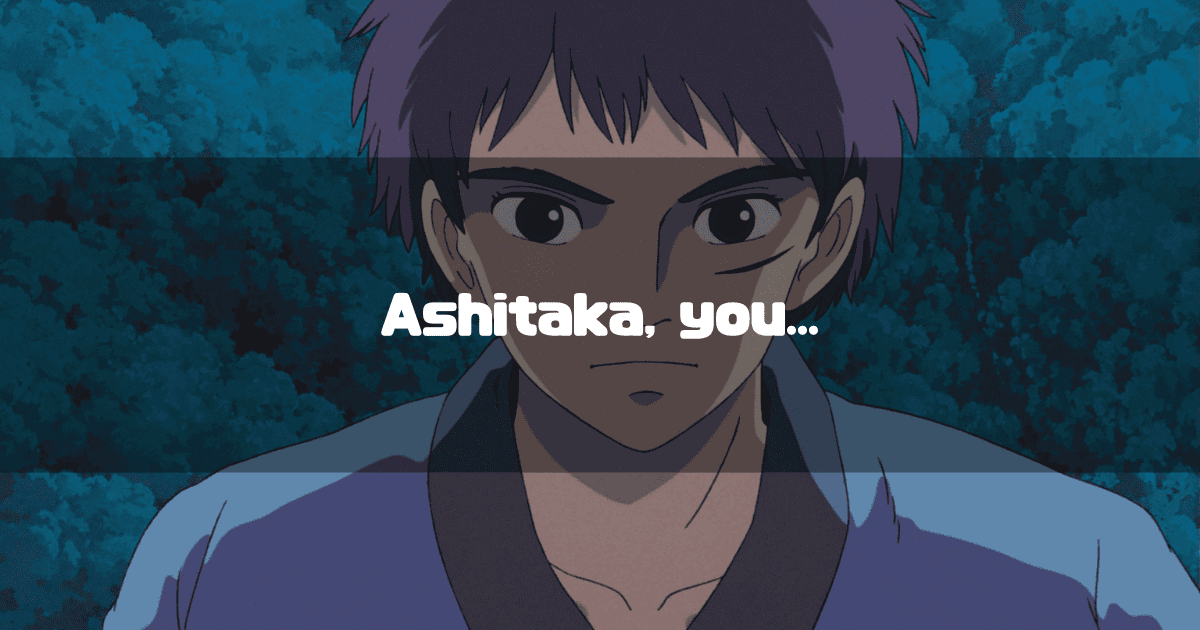
Ashitaka, Intruding on People’s Workspaces
So, what kind of guy is Ashitaka? Basically, he can be described as “a brave, kind man who doesn’t show his suffering to others.”
Moreover, Ashitaka is a protagonist suffering under an “unjust curse.” While I think, “Wow, he’s doing so well in such a tough situation,” when it comes to women, Ashitaka reveals an unexpected side of his nature. A clear example of this occurs when Ashitaka first visits Irontown.
While Ashitaka is eating with the men, the women working the bellows come to see him out of curiosity. The women jokingly tell Ashitaka, “Come over to our place,” to which he replies that he wants to see their workplace. The women respond that they need to put on their makeup and return to work. After returning from Lady Eboshi’s secret room, Ashitaka joins the women and starts working the bellows.
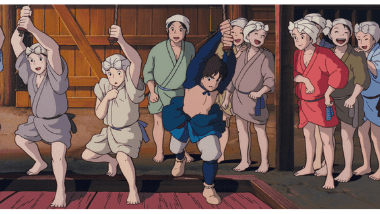
At first glance, this seems like a normal sequence of events. But to put it bluntly, Ashitaka takes the words “Come over to our place” completely at face value, barges into the women’s workplace, and starts working the bellows without even being asked.
If it were me, I would probably just say a quick hello and leave it at that. I certainly wouldn’t barge into their workplace, and even if they said, “Come over to our place,” I wouldn’t think they were being serious.
In How Princess Mononoke Was Born(「もののけ姫」はこうして生まれた, in Japanese), there’s a recording of the voice acting session for the scene where Kohroku’s wife, Toki, tells the women working the bellows, “Let him have a go!”
The voice actress is Sumi Shimamoto, who also played Nausicaä and Clarisse, but she struggled quite a bit with this line. It seems Director Miyazaki was dissatisfied because Toki’s impression of Ashitaka was coming across as too positive.
He probably wanted a nuance of treating Ashitaka dismissively, something like, “This guy actually showed up. He won’t leave unless we let him, so just let him do it already.” However, she couldn’t quite produce that nuance, and they did many retakes.
All the voice acting scenes included in this documentary are fascinating and well worth watching. It really makes you realize how tough voice acting is.
So, how was Ashitaka able to do such a thing?
Ashitaka, the Man Who Was Meant to Be King
To understand Ashitaka, we must not forget that he was originally supposed to become the leader (king) of his village. If the attack by the Tatarigami (curse god) hadn’t happened and he had become the village chief, it’s not a given that Kaya would have been his only wife.
Regarding this, Director Miyazaki speaks as follows in “The Place Where the Wind Returns, Continued(続・風の帰る場所, in Japanese)” (after a talk about someone asking if Ashitaka would return to his village):
“It’s meaningless, isn’t it? But when I told someone, ‘If he takes San back to his village, Kaya will be there,’ they said, ‘Oh, I see.’ It’s so much easier for people to understand on that level (laughs). I even added, ‘No, he could just make them both his wives’ (laughs).”
(Original Text in Japanese)
「意味ないですよね。でも、サンを乗っけて故郷に帰ったらカヤがいるんだぞって言ったら、ああそうですかって言ったやつがいたけど、そのくらいのレベルにするとものすごく分かるんです(笑)。いや二人とも女房にしてもいいんだ、って追い打ちかけて言いましたけどね(笑い)」
The important thing here is the phrase “he could just make them both his wives.” After all, he’s a king, so that’s just how it is. What I’m trying to say is not that Ashitaka is a womanizer, but that Ashitaka has absolutely no complexes or inhibitions when it comes to women. In fact, it’s impossible for him to have any.
Therefore, the idea that women wouldn’t accept him never crosses Ashitaka’s mind. When they say, “Come over to our place,” he thinks, “Yeah! I’m coming!” The reason he can so casually say things like “You’re beautiful” to San is that he doesn’t even consider the possibility that his words to a woman might not be accepted.
The Scene of Giving Kaya’s Dagger
Considering this context, the “scene where he gives Kaya’s dagger to San” becomes even more outrageous, almost laughable. Ashitaka is probably thinking, “This is shiny, I bet San would be happy if I gave her this.”
What an irritating guy. And what irritates us even more is the fact that San, upon receiving the dagger, is overjoyed, saying “It’s beautiful,” and putting it around her neck.
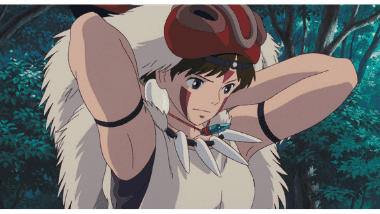
Don’t fall for it so easily, San! That dagger isn’t a family heirloom! It’s a gift from his ex-girlfriend! If San were to ask, “What’s this dagger?” what kind of lie would Ashitaka tell? No, like a true king, Ashitaka would surely answer coolly, “I got it from a woman.”
Ashitaka is a suffering hero burdened by an “unjust curse.” One cannot help but sympathize with that fact. On the contrary, we should respect Ashitaka for fighting against injustice and living so earnestly. We must all strive to live as earnestly as Ashitaka. However, when it comes to women, Ashitaka’s kingly demeanor is quite infuriating.
Now, the above is a reconsideration, as an adult, of the thoughts I had as a 6th-grade boy who thought, “Wait, you’re giving that away?” It wouldn’t be interesting to end here, so I’ll try to turn that “infuriating scene” into a “good scene.”
Rethinking the Scene of Giving Kaya’s Dagger

The Tears Shed by Ashitaka, the Man of Hardship
So far, I’ve been a bit playful in describing Ashitaka’s inner world, but we must not forget the fact that Ashitaka is a “man of hardship.”
Ashitaka, who protected his village and its women, was not only cursed by the Tatarigami but was also exiled from his home, told to “get out.” His inner world must be a mess. Instead of confiding his suffering to Kaya, who saw him off, and seeking comfort, Ashitaka gave her a radiant smile, which also makes him a “good man.” Such a man shed tears only once in the film.
After San attacks Irontown and confronts Lady Eboshi, Ashitaka tries to leave with San. In the process, he is shot by a stray bullet from a firelock. Possessing the power of the Tatarigami’s curse, Ashitaka continues to walk and leaves Irontown despite the blow.
However, Ashitaka loses consciousness due to the bleeding from the wound. San entrusts Ashitaka’s fate to the Shishigami (Forest Spirit). The Shishigami heals Ashitaka’s wound but does not remove the curse. Realizing that the mark on his arm has not disappeared, Ashitaka sheds a single tear.
This is one of the most memorable scenes in Princess Mononoke. That tearful scene is undoubtedly a major turning point in the film, and Ashitaka’s reason for living changes before and after it. Before the tears, he lives desperately to break his own curse; after the tears, he lives for San.
The question I want to raise here is, how many times did Ashitaka cry between leaving his village and shedding the tears in this scene? Of course, it’s not depicted in the film, so we can only imagine. But how one thinks about this will likely determine each person’s “image of Ashitaka.” I will state my own opinion here, but how many times did Ashitaka cry?
How Many Times Did Ashitaka Cry?
There are only two possible answers to the question of how many times Ashitaka cried: “That scene was his first time crying” or “He had cried many times before that.”
I take the position that “he had cried many times.” I have no particular evidence for this, but I just can’t help but think so. What must Ashitaka’s journey have been like, exiled from his home for doing the “right thing”? Procuring food must have been difficult. Moreover, it was a “journey without a destination.” If there were a clear destination, he might have been able to persevere, but for Ashitaka, who didn’t even know if his curse could be broken, the “journey of simply heading west” must have been hellish.
On such an arduous journey, I cannot believe there wasn’t a single night where he cried out “Kaya~” while clutching the dagger he received from her.
When you think about it this way, you can understand that meeting Jigo and receiving the keyword “Shishigami” must have been a true blessing for Ashitaka.

In the scene where Jigo and Ashitaka share a meal, what Jigo says probably sounds to Ashitaka like this: “If you go a little further west, there’s a good hospital called ‘Shishigami Clinic.’ If you talk to ‘Dr. Shishigami’ there, he might be able to do something about your illness.” Ashitaka, who had been on a journey without a destination, had finally found a destination of hope.
But the result was, as mentioned above, a sad one. The fact that the mark remained means that even though he finally met Dr. Shishigami, he was told something like, “Well, it’s not really about curing your illness, why don’t we think about the future?” In other words, “the illness cannot be cured.” Ashitaka, who was in the midst of “hardship,” must have truly “despaired.”
Ashitaka is “Okay Now”
Thus, Ashitaka’s story began with “hardship” and was about to end in “despair.” However, Ashitaka had another blessing: “the existence of San.” As I mentioned earlier, Ashitaka’s purpose for living changes before and after the scene where he cries. Or rather, we should think that he “was able to change it.”
In other words, by meeting San, Ashitaka saw another path: not “the path of fighting his own suffering,” but “the path of saving San and living with her.” Of course, the condescending idea of “saving” her was laughed off by Moro (here too, Ashitaka’s kingly feeling appears). But he still found a purpose for living.
Giving San the dagger that Ashitaka had clutched and cried over “Kaya~” night after night means “giving her the precious dagger that supported him through his hardship,” and it means “may you have good fortune.” Above all, it also means that “Ashitaka no longer needs the dagger that supported him.”
Thinking this way, what we, the viewers of that scene, should think is: “Ashitaka, you’re okay now, aren’t you? You couldn’t lift the curse, but you can go on living. You did well. And I’m so glad you met San.“
Summary of The Problem of Giving Kaya’s Dagger to San
To summarize the above:
Ashitaka, who was originally meant to be a king, has no inhibitions towards women. Therefore, he takes the women’s words at face value and helps with the bellows without being asked. The scene where he gives San the dagger he received from Kaya can be seen as based on the shallow thought of “San will be happy if I give her this,” and that’s mostly correct.
However, if we stand on the premise that Ashitaka was on a “journey of hardship,” then that scene represents “Ashitaka being able to overcome his own hardship,” and shouldn’t we rather cheer for Ashitaka’s future, thinking “Good for you!”?
I think that’s how it is. Of course, even if you think this way, the feeling of him being “dislikable” might not disappear, but it’s slightly better than not thinking about it at all, isn’t it?
Appendix: Ashitaka and Lady Eboshi
In the main part of this article, I focused on Ashitaka’s inner world, specifically his “lack of inhibitions towards women,” but another aspect Ashitaka possesses is “youth” or “immaturity.” And Lady Eboshi delivers a line that pierces through that “immaturity.”
That is, “Don’t you show off your petty misfortune so smugly.”
There’s a well-established backstory that Eboshi has lived a life so harsh that she can call Ashitaka’s misfortune—an “unjust curse,” “loss of his homeland,” and a “journey like endless hell”—”petty.” Well, it’s understandable that to Eboshi, Ashitaka’s misfortune is “petty,” but it feels a bit harsh.
However, thanks to Lady Eboshi’s severe words, the foundation of the work Princess Mononoke seems to be supported.
In other words, thanks to Lady Eboshi, I feel that we are able to consistently view Ashitaka positively as the protagonist. Ashitaka’s “youth” and “immaturity” probably come from his thinking that “I am the most unfortunate person in this world.” And of course, he’s right. He’s been hit with an “unjust curse,” “loss of his homeland,” and a “journey like endless hell.”
However, if Eboshi hadn’t delivered that line, Ashitaka’s demeanor might have been a bit grating. The existence of Eboshi, who has walked a path of hardship equal to or greater than Ashitaka’s, serves to admonish the still young and immature Ashitaka, giving balance to the film, wouldn’t you say?
The images used in this article are from Studio Ghibli Works Still Images.
About the Author
Recent Posts
- 2025-10-21
Indiana Jones and the Dial of Destiny(2023): Full Synopsis & Analysis: Indy’s True Motive and the Enigma of Helena - 2025-10-15
Indiana Jones and the Dial of Destiny(2023):Historical Background-WWII, the Real Dr. Schmidt, the Siege of Syracuse, and the Antikythera Mechanism - 2025-10-08
Why Does Children Who Chase Lost Voices Feel So Ghibli-esque? [Makoto Shinkai’s “Tale of Farewell”] - 2025-10-07
5 Centimeters per Second: Characters, Voice Actors, Character Analysis and Character Map - 2025-10-06
5 Centimeters per Second: Full Synopsis, Analysis, Ending Explained & Character Map (Spoilers)

